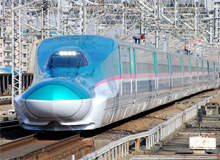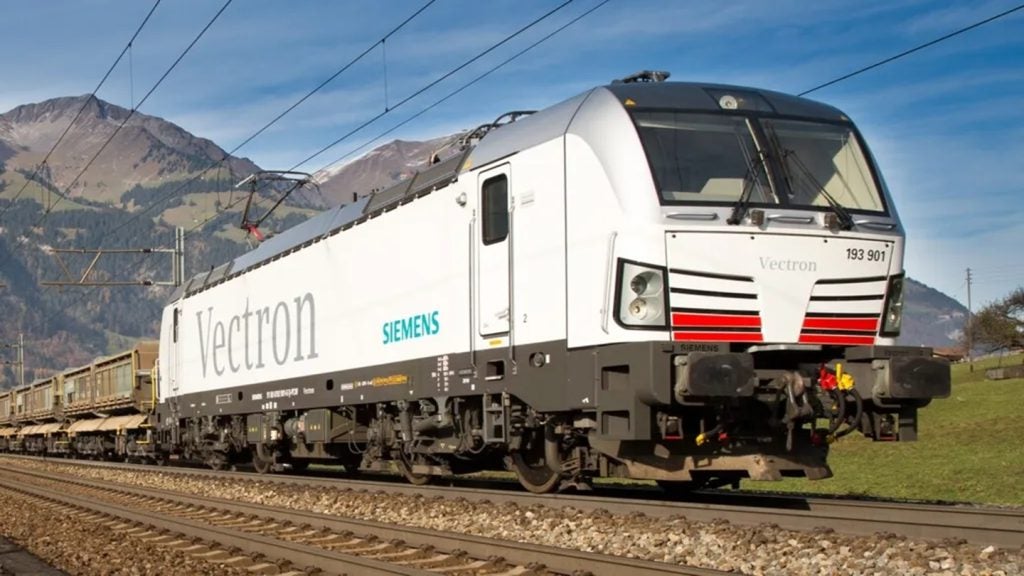
"There are three emerging trends – safety, comfort and energy efficiency," explains transport consultant, Ernie Bell, "and that means there’s considerable convergence of design elements between all of the manufacturers. They’re all basically chasing the same thing. Distributed power, regenerative braking, greater modularity, noise reduction – it’s all standard for the next generation."
The trick, he believes, lies in being able to tailor trainsets to meet the particular needs of the operator, while overcoming the increase in technical risk that such deviations introduce.
With development costs high, the industry has tended to be dominated by a small number of familiar names – Kawasaki Heavy Industries, Hitachi, Alstrom, Siemens and Bombardier – all of whom have their own entrants in the race to supply the next-generation of trainsets. However, in China other manufacturers are emerging with ambitions of their own to both satisfy their domestic market and extend Chinese influence abroad.
Competition is inevitably set to be keen amongst these rivals to build the quickest, safest and most reliable trains, and the battle-lines are already being drawn.
Hayabusa, Shinkansen and efSET bullet trains
efSET, the next generation bullet train is aimed at overseas markets
How well do you really know your competitors?
Access the most comprehensive Company Profiles on the market, powered by GlobalData. Save hours of research. Gain competitive edge.

Thank you!
Your download email will arrive shortly
Not ready to buy yet? Download a free sample
We are confident about the unique quality of our Company Profiles. However, we want you to make the most beneficial decision for your business, so we offer a free sample that you can download by submitting the below form
By GlobalDataHigh-speed rail was born in Japan, and the ground-breaking work of Hitachi and Kawasaki Heavy Industries in first bringing the Shinkansen "bullet" trains to the world has continued into their latest generation product – the E5 Series – used on Japan Rail East’s new 300km/h Hayabusa (meaning ‘Peregrine’) services.
Specifically engineered to address many of the nagging noise and comfort problems of high-speed travel, the Hayabusa sports a new 15m nose to help eliminate ‘tunnel boom’, covered bogies to reduce track noise, and a single, re-designed pantograph per car, to cut the sounds of the overhead power connection.
The successes at bringing these latest developments in safety and enhanced passenger experience to the home market may be about to be repeated elsewhere. In November 2010 at the Mass-Trans Innovation Japan Exhibition, Kawasaki Heavy Industries unveiled efSET, their new high-speed rail vehicle purpose designed for overseas use – and the first ever foray into the non-domestic market by a Japanese manufacturer.
The basic design work has already been completed, with the detailed process continuing alongside Kawasaki’s global marketing efforts, and as company spokesman Akihiro Naito explained at the launch, they intend to present efSET worldwide.
Alstom AGV very high speed train
The Alstom AGV is the very high speed successor to the TGV
Alstom’s TGV enjoys the global distinction of being the most successful of all high-speed trains to date, in terms of both the numbers built and the revenue traffic carried, while its technology has also influenced the development of other vehicles, such as the Acela Express in the US. The ‘Automotrice à Grande Vitesse’ (AGV) is the company’s latest offering to the high-speed industry – a modular, next generation successor with an inherent multimarket capability that has led some to tip it as the first truly pan-European trainset.
Ten years and €100m of research lies behind the design, which reflects the growing trend towards the distributed traction seen in the Shinkansen trains, while retaining the characteristic articulation of its TGV antecedents. According to the company, the power system – quad voltage, permanent magnet motors, water-cooled IGBT traction converters and regenerative braking – provides for speeds of up to 360km/h, while consuming 15% less energy. The combination adds up to 20% greater passenger capacity and slashes maintenance costs by nearly a third.
Siemens Velaro – the best selling high speed train
Siemens’ Velaro family is one of the best selling ranges of high speed trains
While the TGV can lay claim to the lion’s share of the commercial success to date, today Siemens’ Velaro family of high-speed trains is arguably the best selling range on the market, and a worthy rival to Alstom’s dominance.
Having successfully opened the markets of Spain, Russia and China, the Velaro design is another example of electric multiple unit (EMU) distributed power, and shares the industry-wide drive towards energy efficiency, increased safety and optimised passenger comfort. The latest generation Velaros represent the culmination of the company’s research and development work, featuring major advances in aerodynamic profiling, energy management and noise reduction technology.
In October 2010, Eurostar announced its plans to purchase 10 new Velaro e3202s – at a cost of around €600m – to enter service in 2014. While this would lead to the operator running some of the greenest trains around, and open up new routes to the Netherlands and Germany, it has caused a few ruffled feathers in France, not least because Eurostar itself is an affiliate of the state-owned SNCF. The idea of buying foreign trains did not go down well – no matter how environmentally friendly they may be.
Bombardier Zefiro – bringing eco to high speed rail
The Bombardier Zefiro 380 seeks to merge high speed rail with eco-credentails
Nationalistic factors aside, the green card is proving an increasingly potent one, as the universal move amongst rolling-stock manufacturers to reduce impact helps bolster the growing perception amongst the travelling public of the sound eco-credentials of high-speed rail.
The Passengers Division President of Bombardier Transportation, Stephane Rambaud Measson recently made the point that success is now about more than just speed, it is about providing "cost-efficiency, coupled with high capacity capabilities, pleasing aesthetics, reliability, safety, durability and environmentally friendly transportation solutions" too. With an impressive record of sales, the company’s Zefiro – described as a "game-changer" by Measson – looks to be achieving this.
A conventional, non-articulating design, comprising powered cars at either end and unpowered trailer cars, the Zefiro can be configured to a range of voltages to meet operator needs. A variant of the type 300 – the V300 – was recently selected by Italy’s Trenitalia to enter service in 2013, but it is in China that it has been making its greatest inroads, where the bulk of the company’s 210 sales to date have been made – and China is a country that has taken the whole idea of high-speed travel to its collective heart.
Chinese ambition
China already claims the world’s longest high-speed rail network at a combined length of over 7,500km, and massive ongoing investment will see this almost double by 2012. The China South Locomotive and Rolling Stock Corporation (CSR) has made no secret of its ambition to use this as a springboard to become the global number one manufacturer within five years.
According to CSR’s President Zheng Changhong, overseas business has only accounted for 10% of the company’s total revenue; now they are aiming to double that, targeting new markets especially in the Middle East, South America and Africa. With the Chinese Government having pursued a rigorous policy of technology transfer from overseas manufacturers and indigenous companies now holding a number of patents on redesigned elements of the foreign designs, many believe such Chinese ambition will ultimately be realised.
One thing is for sure, while Bell may well be right that the quest for faster, safer and more reliable trains has largely conspired to drive the next generation of high-speed trainsets along convergent lines of evolution, the manufacturers will be hoping that potential customers will still see sufficient differences. As Bombardier’s Measson said, it has to be "about more than just speed."











